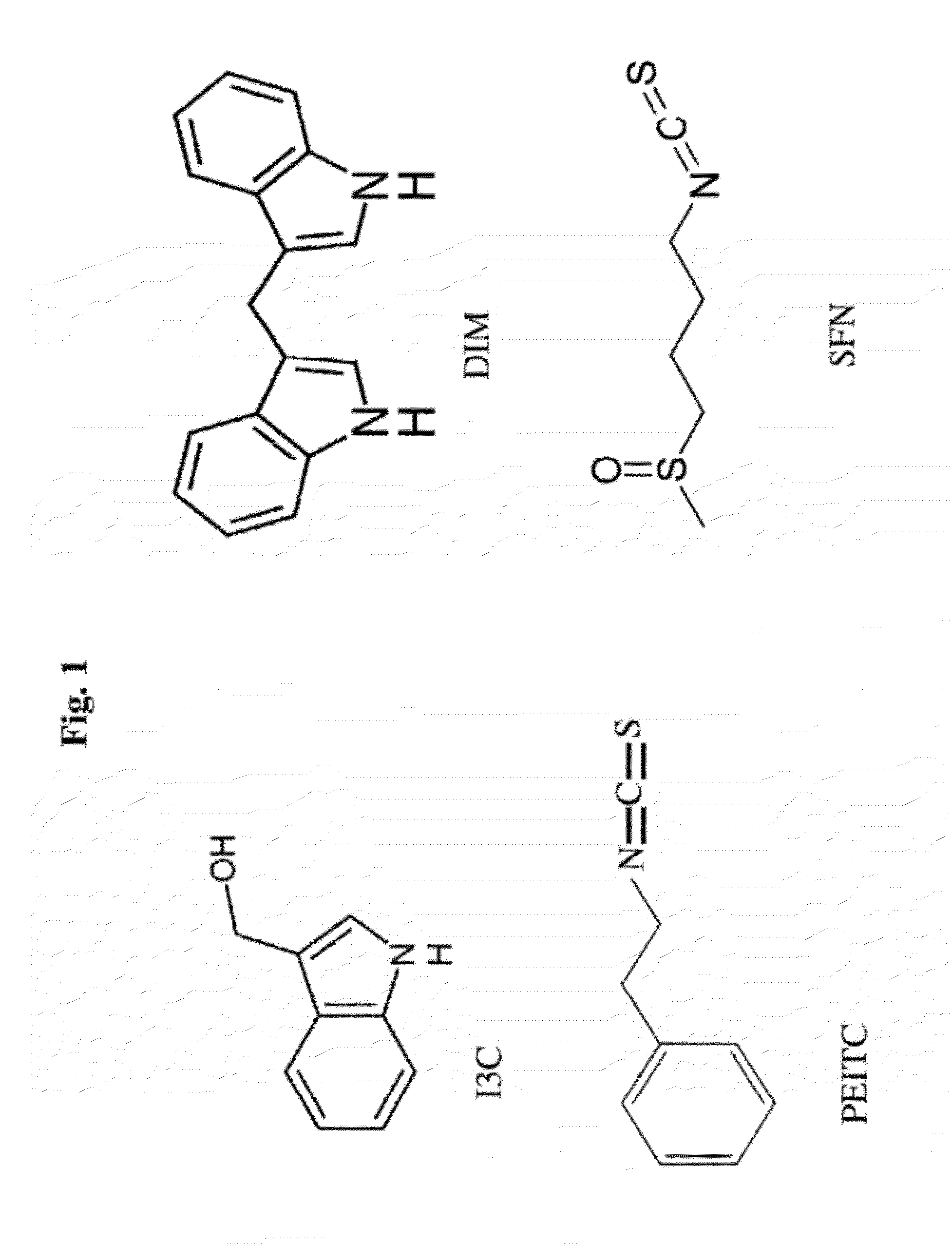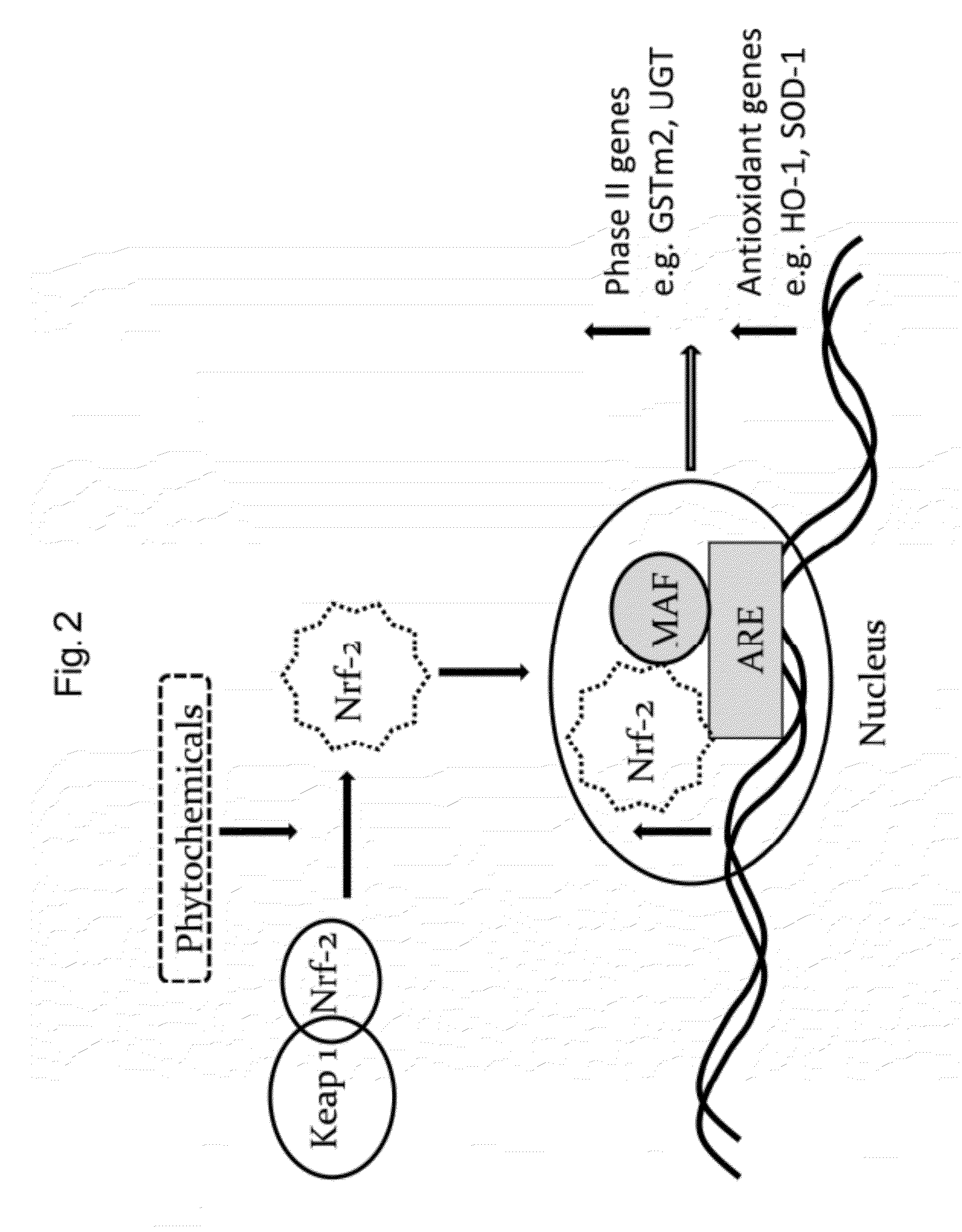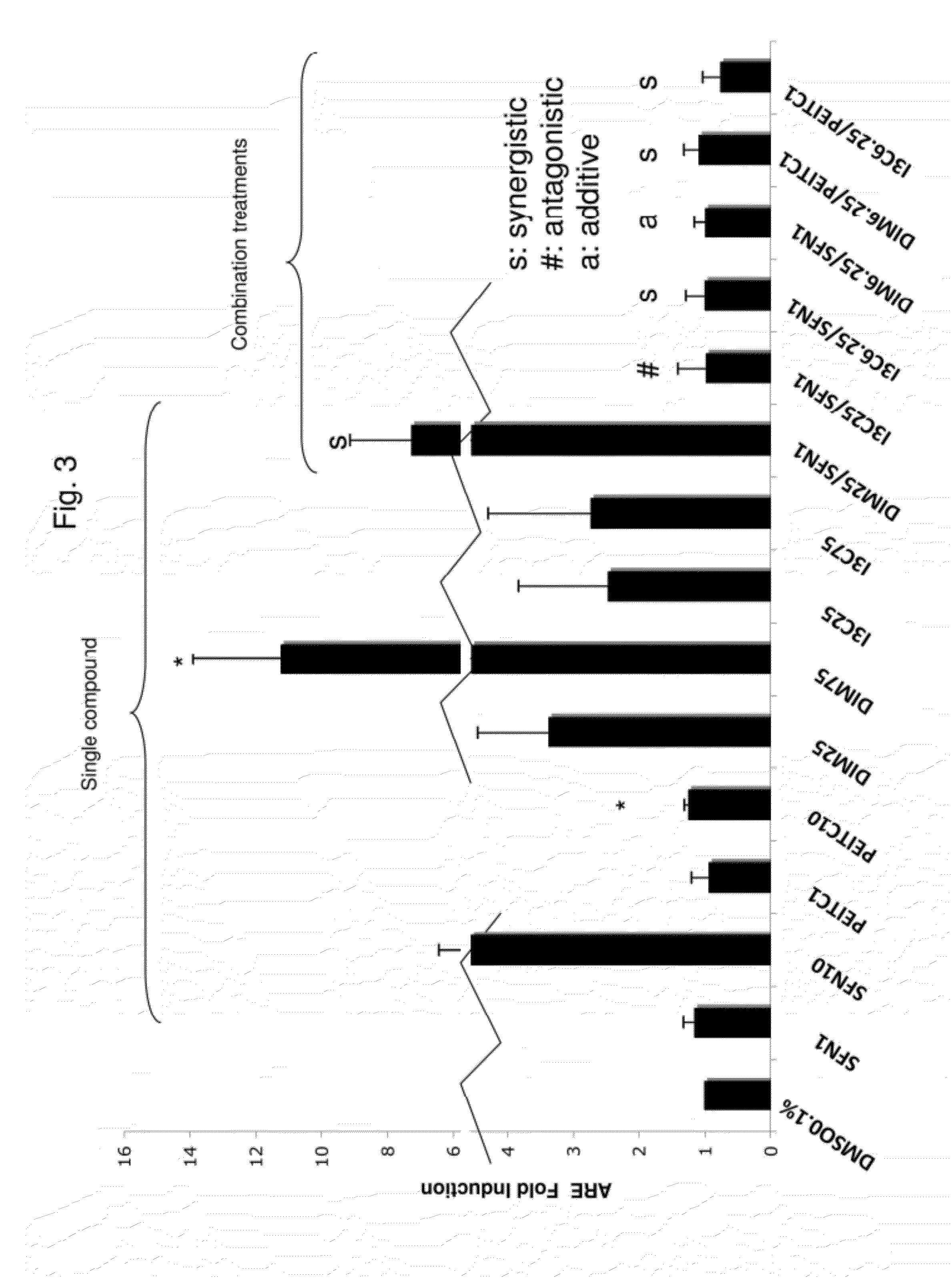Compositions and methods for epigenetic modification of nucleic acid sequences
a nucleic acid sequence and epigenetic modification technology, applied in the field of epigenetic modification of genomic dna in mammalian cells, can solve the problems of neoplastic transformation, oxidative damage to dna, enhanced genomic instability,
- Summary
- Abstract
- Description
- Claims
- Application Information
AI Technical Summary
Benefits of technology
Problems solved by technology
Method used
Image
Examples
example 1
Methods and Materials
[0100]This example describes general methods and materials used in Examples 2-6,
A. Materials
[0101]The I3C, DIM and PEITC were purchased from Sigma Chemicals Co. (St Louis, USA). The SFN was obtained from LKT Laboratories (St Paul, USA).
B. Cell Culture
[0102]The stably transfected single clone HepG2-ARE-C8 (HepG2-C8) cell line has been established previously in our laboratory using the pARETI-luciferase reporter gene. The cells were maintained in Dulbecco's modified Eagle medium supplemented with 10% fetal bovine serum (FBS), 1.17 g / l sodium bicarbonate, and 100 unit / ml penicillin, 100 μg / ml streptomycin at 37° C. in a humidified incubator with 5% CO2.
C. MTS Assay
[0103]The cytotoxicity of the phytochemicals was tested in HepG2-C8 cells using the CellTiter 96 aqueous non-radioactive cell proliferation MTS assay [3-(4,5-dimethylthiazol-2-yl)-5-(3-carboxymethoxyphenyl)-2-(4-sulfophenyl)-2Htetrazolium, inner salt; MTS] (Promega, Madison, Wis.). The cells were first cu...
example 2
[0111]To test the cell viability of I3C, DIM, SFN and PEITC, the MTS assay was employed, DIM and I3C showed less toxicity than SFN and PETIT in 1% FIBS medium (FIG. 11), SFN and PEITC showed similar cell viability inhibitory concentrations (IC50) of around 20 μM, whereas I3C and DIM had a higher IC50 of 135 μM and 51 μM, respectively. Using 10% FBS, several previous publications showed that DIM was more cytotoxic than I3C, hence the same dosage was tested in HepG2-C8 cells with 10% FBS. The cytotoxicity of HepG2-C8 was affected more with DIM than I3C, e. DIM showed an IC50 of around 85 μM, while I3C showed an IC50 of 300 μM in 10% FBS medium (data not shown).
example 3
ARE-Luciferase Activity
[0112]In the ARE transcriptional activation assay, the cells were treated with higher doses of DIM and I3C (25 and 75 μM), since from the MTS assay the viability was not affected at these concentrations in 1.0% FBS medium (data not shown). To evaluate the transcriptional activation of ARE, an ARE-luciferase reporter assay was performed. SFN and PEITC were used as positive controls and 0.1% DMSO was used as a negative control. The ARE-luciferase activity was expressed as the fold induction over the negative vehicle control. All compounds alone and in combinations induced ARE-luciferase activity in HepG2-C8 cells with different potency, as shown in FIG. 3. DIM at 75 μM strongly induced the ARE-luciferase compared with any other treatment (p<0.05). 25 μM DIM with 1 μM SFN (DIM25 / SFN1) was synergistic but not for 25 μM I3C with 1 μM SFN, as shown in FIG. 3. Although there were three synergistic interactions at low doses of combination having ARE activities close t...
PUM
| Property | Measurement | Unit |
|---|---|---|
| bond angle | aaaaa | aaaaa |
| bond angle | aaaaa | aaaaa |
| bond angle | aaaaa | aaaaa |
Abstract
Description
Claims
Application Information
 Login to View More
Login to View More - R&D
- Intellectual Property
- Life Sciences
- Materials
- Tech Scout
- Unparalleled Data Quality
- Higher Quality Content
- 60% Fewer Hallucinations
Browse by: Latest US Patents, China's latest patents, Technical Efficacy Thesaurus, Application Domain, Technology Topic, Popular Technical Reports.
© 2025 PatSnap. All rights reserved.Legal|Privacy policy|Modern Slavery Act Transparency Statement|Sitemap|About US| Contact US: help@patsnap.com



